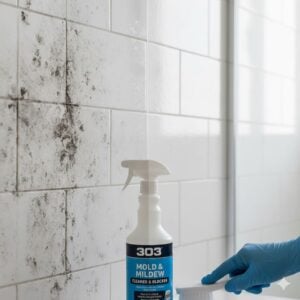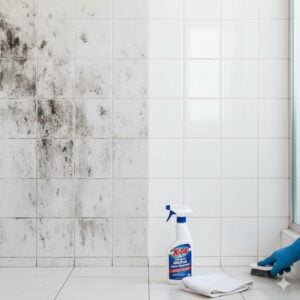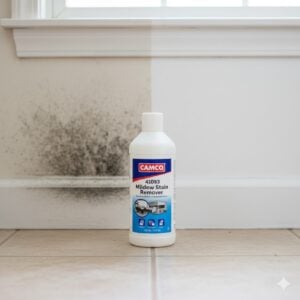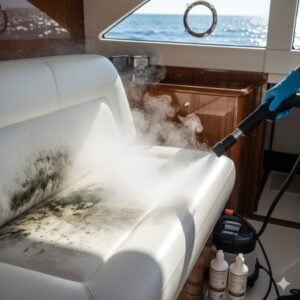The term mildew refers to a type of fungus that appears as a thin layer of growth, usually white, gray, or black, on surfaces that are damp or poorly ventilated. It thrives in humid environments and is commonly found on walls, fabrics, bathroom tiles, ceilings, and organic materials like paper or leather. To fully understand mildew meaning in Nepali, we need to explore not only its translation but also how it develops, spreads, and affects daily life — particularly in tropical and humid regions like Nepal.
Table of Contents
ToggleMildew Meaning in Nepali
In Nepali, mildew is translated as ढुसी (Dhusi) or sometimes described as फफूंदी (Phaphundi). Both words refer to small fungal growth caused by moisture and lack of ventilation. In simple terms, mildew or ढुसी is the early stage of fungus that grows on damp surfaces and gives off a musty smell.
For example, when a wall or cloth remains wet for too long, you may notice a thin, powdery white or gray coating — that is mildew. It can also form on stored food, books, and wooden furniture if humidity stays high.
Scientific Definition of Mildew
Scientifically, mildew is a form of microscopic fungi belonging to the kingdom Fungi. It’s closely related to mold but generally appears as a surface growth that can be wiped off easily. Mildew spores spread through air and land on moist areas, where they begin to grow and reproduce.
Unlike bacteria, mildew does not need sunlight to survive. It relies on organic materials and moisture to feed and multiply. This is why dark and poorly ventilated places are ideal for mildew formation.
Difference Between Mildew and Mold
Although people often use the terms interchangeably, mildew and mold are not identical. Here’s how they differ:
| Aspect | Mildew | Mold |
|---|---|---|
| Appearance | White, gray, or light brown; flat and powdery | Black, green, or dark; fuzzy and thick |
| Depth | Surface-level growth | Penetrates deeper into materials |
| Odor | Musty and mild | Strong, earthy, and unpleasant |
| Health risk | Low to moderate (allergies, irritation) | High (respiratory problems, infections) |
So, mildew can be considered a milder form of mold — easier to clean but still a warning sign of excessive humidity and poor ventilation.
How Mildew Grows and Spreads
Mildew grows from microscopic spores present in the air. When these spores land on a damp surface, they begin to reproduce. Within 24 to 48 hours, you can see visible colonies forming. Common causes of mildew growth include:
- High humidity (above 60%)
- Lack of sunlight and poor air circulation
- Leaking pipes or roofs
- Wet clothes or towels left unwashed
- Condensation on cold walls and windows
In homes across Nepal, mildew often appears during the monsoon season when rain increases humidity. It’s common to find mildew on wardrobes, bathroom tiles, and ceilings in rooms with limited airflow.
Examples of Mildew in Everyday Life
- On fabric: White spots or patches on clothes stored in humid closets.
- On walls: Grayish layers forming behind furniture or near windows.
- On food: A soft, white coating that forms when food is left in damp containers.
- On books: Brown spots and a musty odor caused by trapped moisture in pages.
Health Effects of Mildew
Although mildew is less dangerous than mold, it can still cause discomfort and allergic reactions, especially in people sensitive to spores. Common symptoms include:
- Sneezing and coughing
- Runny nose or nasal congestion
- Watery eyes and itchy skin
- Headaches from musty odor exposure
- Aggravated asthma in children or elderly individuals
Long-term exposure can weaken indoor air quality and affect respiratory health. Therefore, removing mildew promptly is essential for a healthy home environment.
How to Identify Mildew Early
Early detection helps you clean mildew before it spreads. Look for these signs:
- A light powdery texture on surfaces
- Gray or whitish patches forming in corners or on fabrics
- A mild, damp odor even after cleaning
- Peeling paint or water stains on walls
DIY Mildew Removal Methods
If mildew is limited to a small area, you can try cleaning it yourself using these household solutions:
- Vinegar: Spray undiluted white vinegar on the affected area, wait 30 minutes, then scrub with a brush.
- Baking soda: Mix 1 tablespoon of baking soda with water and scrub gently to lift surface mildew.
- Lemon juice and salt: Ideal for fabrics — apply on stains, leave for 15 minutes, and rinse.
- Sun-drying: Expose fabrics or items to sunlight to kill remaining spores naturally.
However, DIY cleaning has its limits. If mildew keeps coming back, it may indicate hidden moisture or poor ventilation that requires professional treatment.
Risks of DIY Mildew Cleaning
While home methods are convenient, they often don’t reach the root of the problem. Overusing vinegar or bleach can damage surfaces, discolor fabrics, or release harsh fumes. Additionally:
- DIY cleaning only removes visible mildew but not airborne spores.
- Incomplete drying allows fungi to regrow within days.
- Harsh chemicals can cause skin or eye irritation.
- Improper cleaning may spread spores to other areas.
For large infestations or recurring mildew problems, it’s always safer to consult professionals who have the right equipment and training.
Professional Mildew Removal in the UAE
In regions like the UAE, where humidity and air conditioning create ideal conditions for mildew, professional remediation is crucial. Companies like Bio-On UAE specialize in mildew and mold treatment using European-standard methods that go beyond surface cleaning.
Bio-On’s team uses high-temperature steam, HEPA vacuum filtration, and anti-fungal disinfectants to remove mildew safely and prevent it from returning. Their service not only targets visible mildew but also cleans air ducts, ceilings, and corners where spores accumulate unnoticed.
Bio-On UAE Mildew Treatment Process
- Inspection: Identify the type of mildew and measure humidity levels.
- Containment: Isolate affected zones to prevent spore spread.
- Cleaning: Apply surface-safe anti-fungal solutions and steam extraction.
- Drying: Use industrial dehumidifiers to remove moisture completely.
- Prevention: Apply protective coating to surfaces for future resistance.
This method ensures long-lasting cleanliness and prevents health risks associated with mildew exposure.
Price Range of Mildew Treatment in the UAE
Costs for mildew treatment vary based on area size and severity. On average:
- Up to 1 sq.m: AED 35
- 1–3 sq.m: AED 30 per sq.m
- 3–7 sq.m: AED 25 per sq.m
- 7–10 sq.m: AED 20 per sq.m
- Over 10 sq.m: Free inspection and customized quote
These rates reflect Bio-On UAE’s standard pricing for mold and mildew treatment, including inspection, cleaning, and prevention. Note: Prices can vary based on building structure, access, and material type.
How to Prevent Mildew Growth
Prevention is always easier and cheaper than treatment. Here are practical steps for homeowners and tenants in both Nepal and the UAE:
- Keep rooms well-ventilated — open windows daily if possible.
- Use exhaust fans in bathrooms and kitchens to control humidity.
- Fix leaks immediately — even small drips can cause mildew.
- Clean air conditioning filters regularly.
- Use dehumidifiers during monsoon or in humid apartments.
- Dry wet clothes promptly instead of leaving them indoors.
Mildew Meaning in Daily Context (Nepali Examples)
- On walls: “मेरो कोठाको पर्खालमा ढुसी लागेको छ।” (“There is mildew on my room wall.”)
- On clothes: “लुगा लामो समयसम्म भिजेको हुँदा फफूंदी लागेको छ।” (“The clothes developed mildew because they stayed wet too long.”)
- On food: “यो रोटीमा ढुसी देखिएको छ।” (“This bread has mildew.”)
Why Understanding Mildew Matters
Mildew may seem like a small household issue, but it signals deeper humidity problems that can affect your health and home’s durability. By learning its causes, prevention, and treatment options, you protect both your environment and well-being. Whether in Nepal’s monsoon or the UAE’s humid climate, regular inspection and ventilation are your first defenses.
Conclusion
In Nepali, mildew meaning is “ढुसी” or “फफूंदी,” referring to the thin fungal growth that develops in damp, dark places. Though it looks harmless at first, mildew can damage materials and cause allergic reactions if ignored. While small spots can be cleaned with simple home remedies, recurring mildew or widespread patches need professional care. Companies like Bio-On UAE provide advanced anti-fungal treatment, ensuring your space stays fresh, safe, and mildew-free. Whether you’re in Nepal or the UAE, keeping humidity under control is the key to preventing mildew — and maintaining a healthy, clean home.













